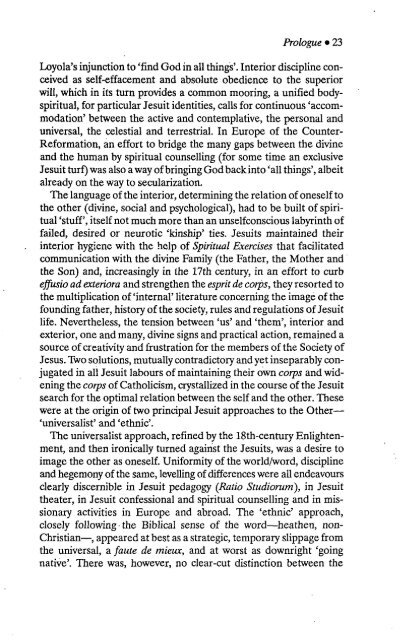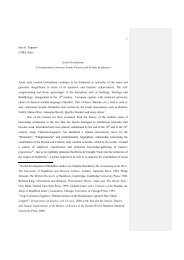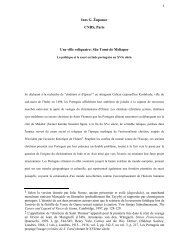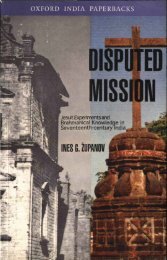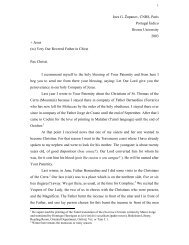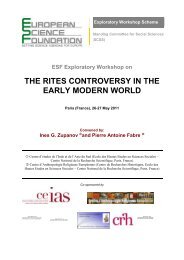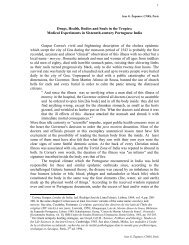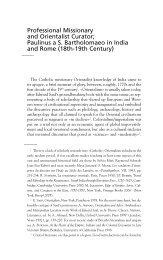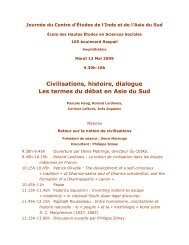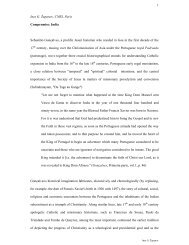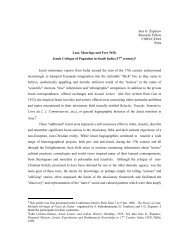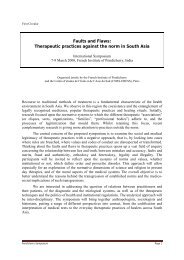INES G. ZUPANOV - Ines G. Županov
INES G. ZUPANOV - Ines G. Županov
INES G. ZUPANOV - Ines G. Županov
You also want an ePaper? Increase the reach of your titles
YUMPU automatically turns print PDFs into web optimized ePapers that Google loves.
Prologue • 23<br />
Loyola's injunction to 'find God in all things'. Interior discipline conceived<br />
as self-effacement and absolute obedience to the superior<br />
will, which in its turn provides a common mooring, a unified bodyspiritual,<br />
for particular Jesuit identities, calls for continuous 'accommodation'<br />
between the active and contemplative, the personal and<br />
universal, the celestial and terrestrial. In Europe of the Counter-<br />
Reformation, an effort to bridge the many gaps between the divine<br />
and the human by spiritual counselling (for some time an exclusive<br />
Jesuit turf) was also away of bringing God back into 'all things', albeit<br />
already on the way to secularization.<br />
The language of the interior, determining the relation of oneself to<br />
the other (divine, social and psychological), had to be built of spiritual<br />
'stuff', itself not much more than an unselfconscious labyrinth of<br />
failed, desired or neurotic 'kinship' ties. Jesuits maintained their<br />
interior hygiene with the help of Spiritual Exercises that facilitated<br />
communication with the divine Family (the Father, the Mother and<br />
the Son) and, increasingly in the 17th century, in an effort to curb<br />
effusio ad exteriora and strengthen the esprit de corps, they resorted to<br />
the multiplication of 'internal' literature concerning the image of the<br />
founding father, history of the society, rules and regulations of Jesuit<br />
life. Nevertheless, the tension between 'us' and 'them', interior and<br />
exterior, one and many, divine signs and practical action, remained a<br />
source of creativity and frustration for the members of the Society of<br />
Jesus. Two solutions, mutually contradictory and yet inseparably conjugated<br />
in all Jesuit labours of maintaining their own corps and widening<br />
the corps of Catholicism, crystallized in the course of the Jesuit<br />
search for the optimal relation between the self and the other. These<br />
were at the origin of two principal Jesuit approaches to the Other—<br />
'universalist' and 'ethnic'.<br />
The universalist approach, refined by the 18th-century Enlightenment,<br />
and then ironically turned against the Jesuits, was a desire to<br />
image the other as oneself. Uniformity of the world/word, discipline<br />
and hegemony of the same, levelling of differences were all endeavours<br />
clearly discernible in Jesuit pedagogy (Ratio Studiorum), in Jesuit<br />
theater, in Jesuit confessional and spiritual counselling and in missionary<br />
activities in Europe and abroad. The 'ethnic' approach,<br />
closely following • the Biblical sense of the word—heathen, non-<br />
Christian—, appeared at best as a strategic, temporary slippage from<br />
the universal, a faute de mieux, and at worst as downright 'going<br />
native'. There was, however, no clear-cut distinction between the


